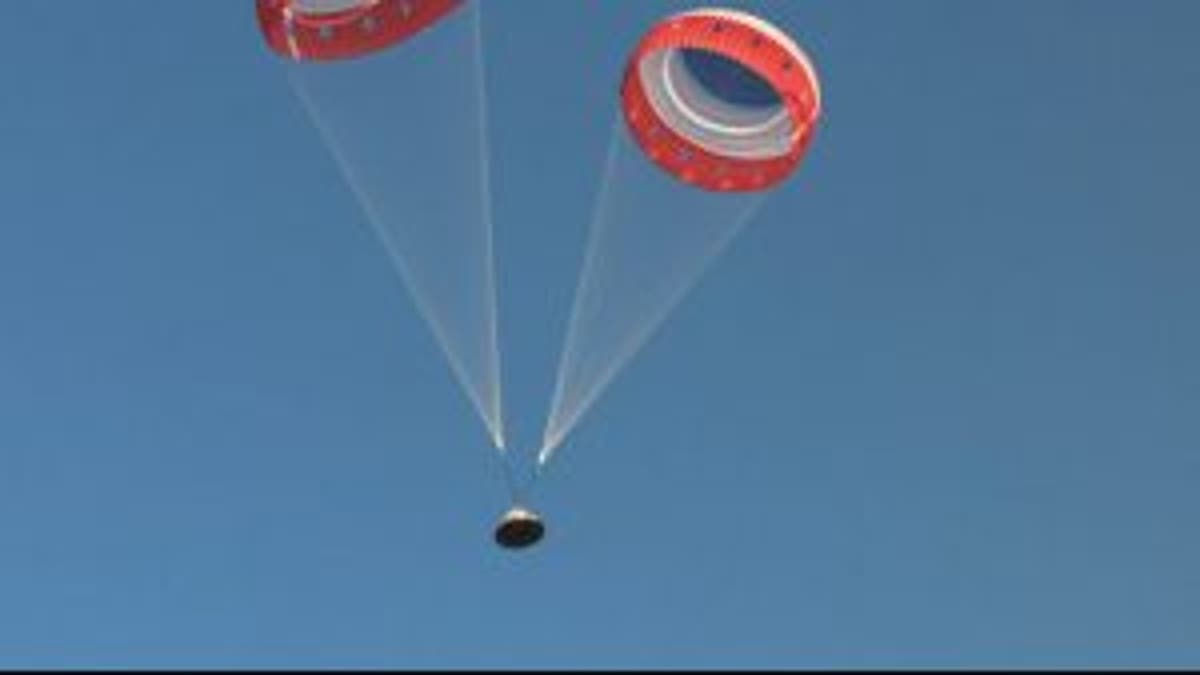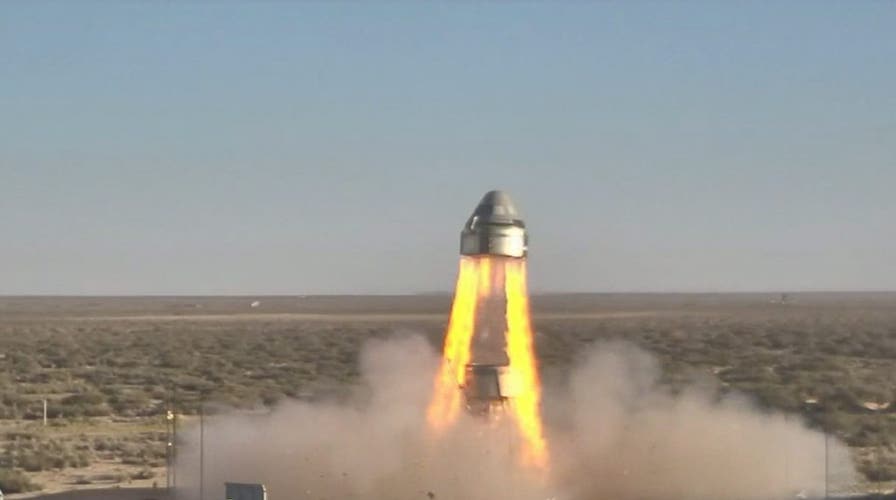Fox News Flash top headlines for Nov. 4
Fox News Flash top headlines for Nov. 4 are here. Check out what's clicking on Foxnews.com
Boeing’s Starliner capsule that will eventually take astronauts into space completed a key abort test Monday when it soared for almost a mile before parachuting back into the New Mexico desert.
No astronauts were on board the capsule for Monday morning’s test of the crew abort system, just a test dummy. The abort system will provide a fast getaway for the three astronauts if there's an emergency on the Florida pad or in flight.
Boeing plans to launch the Starliner to the International Space Station next month without a crew. The Starliner capsule will be launched atop a United Launch Alliance Atlas V rocket.
AIR FORCE’S MYSTERIOUS X-37B SPACE PLANE RETURNS TO EARTH AFTER RECORD-BREAKING 780 DAYS IN ORBIT

Boeing's CST-100 Starliner in the Pad Abort Test, (Image credit: NASA TV)
“[Boeing Space's] Starliner spacecraft soared through a critical safety milestone in a major test of its launch abort system this morning. Lots of data analysis ahead, but we are one big step closer to flights with crew!” tweeted NASA.
Only two of the three main parachutes deployed, but NASA said astronauts would have been safe if aboard. The test took place at the U.S. Army’s White Sands Missile Range.
“The test team and spacecraft performed flawlessly,” said Boeing’s Starliner Program Manager John Mulholland in a statement. “Emergency scenario testing is very complex, and today our team validated that the spacecraft will keep our crew safe in the unlikely event of an abort.”
NASA ANNOUNCES NEW VIPER MOON ROVER THAT WILL EXPLORE THE LUNAR SURFACE

In this image made from a video provided by NASA Boeing tests the launch abort system of the Starliner capsule in White Sands Missile Range in New Mexico on Monday, Nov. 4, 2019. (NASA via AP)
The capsule fired its four launch abort engines (LAEs) and several orbital maneuvering and attitude control (OMAC) thrusters, according to Boeing.
“With 190,000 pounds of thrust, the spacecraft quickly pushed up and away from the test stand, showcasing how fast the system can whisk crews away from danger if necessary,” the company explained in the statement. “The vehicle flew nearly a mile in just under 20 seconds before deploying its forward heat shield and parachutes.”
The entire flight lasted one-and-a-half minutes.
“Did you see [Boeing Space] Starliner critical safety test this morning? Back on the East Coast, ULA technicians are beginning to assemble #AtlasV that will launch #Starliner,” tweeted United Launch Alliance Monday.
NASA ASTRONAUT DESCRIBES DRAMATIC ESCAPE FROM FAILED SOYUZ ROCKET

Parachutes deploy on the Starliner capsule. (Image credit: NASA TV)
Last year, NASA astronaut Nick Hague and Russian cosmonaut Alexei Ovchinin made a dramatic escape after their Soyuz booster rocket failed just two minutes after launch.

The Starliner capsule lands in the New Mexico desert. (Image credit: NASA TV)
After blasting into the sky from the Baikonur Cosmodrome in Kazakhstan, a problem with the separation of first and second stage booster rockets forced Hague and Ovchinin to make a dangerous “ballistic re-entry” into Earth’s atmosphere.
CLICK HERE TO GET THE FOX NEWS APP
The Associated Press contributed to this article. Follow James Rogers on Twitter @jamesjrogers

